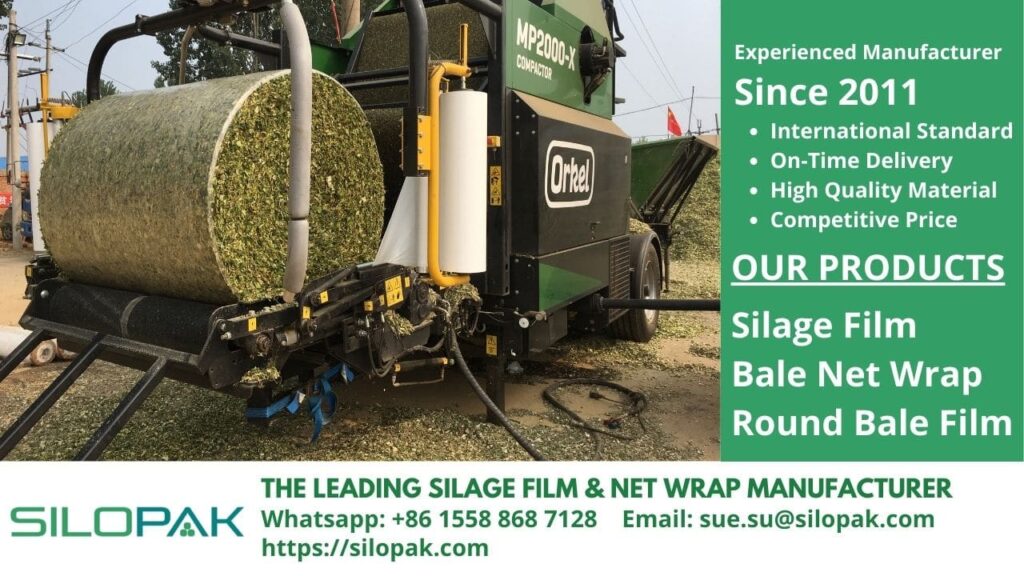
Silage is another name for forage for livestock. This forage feed is processed by fermentation for approximately three weeks until finally it can be consumed by livestock. The silage fermentation process does not always run smoothly. Silage that has successfully gone through the fermentation process will have several characteristics, including the silage texture. Below will be explained how a good texture for silage with the best quality.
contents
The Characteristics of Good Silage
Before discussing the texture of silage, review the following characteristics of good quality forage. Several characteristics indicate that fermented green feed is successful and has the best quality. The first is that it has a distinctive fragrant smell with the fermentation process. Second, the color of fermented feed is still green, although not as green as before the fermentation process.
The brownish-green color can still be said that the fermentation process has been successful. The next feature is that there is no fungus and no lumps when taken. The texture is still clearly visible if it is forage. next is the material does not smell bad. And finally, the pH or degree of acidity is in the range of 4-4.5.
The characteristics of good silage are timely cutting, that is, when it is about to flower. In addition to the result of silage determining the quality, the manufacturing process will also determine whether the forage is good or fails. The process of putting the ingredients into the fermentation container must also be done quickly to avoid failure of the process.
To make it easier for livestock to consume it, the slaughter must be of a size that allows livestock to swallow it. The next step to produce good quality silage is to tightly cover the container and keep it from being opened too often. One of the good textures of silage is that when held it will feel soft but not wet or even slimy.
Good Silage Texture
The source of forage fiber determines the texture of the silage. An example is corn silage which has a finer texture compared to other silages. That means corn has a lot of fiber content. If the texture is not smooth, it indicates that the silage is made from forage rice straw or elephant grass.
As information, rice straw, and elephant grass are not good for livestock. This is because the fiber content is not as much as corn plants. As is known, the presence of fiber in animal feed is very important. Fiber will function in the digestive tract of livestock.
In addition, the texture of silage with good quality is not sticky and does not agglomerate. If the silage you buy or make turns out to be lumpy and sticky, it could be due to an error in the fermentation process. The sticky texture is not liked by animals. As a result, animals do not want to eat which leads to digestive problems.
Tips for Making the Right Silage So That It Is of Good Quality
Before you get a good silage texture, there are steps you must take in making silage. Several things are also important to note so that making silage is successful. Here are some important things to note:
- The process of making silage goes through the stages of fermentation or anaerobic (without air). So it must be ensured that no air at all can get into the manufacturing container.
- Pay attention to the water content of the material for making silage (forage feed). The moisture content should be between 60-70%. If the water content is not suitable, the quality of the silage produced will not be good.
- Cutting of silage raw materials. Considering that the cattle’s mouth is not wide, you need to pay attention to the process of cutting forage. Is it still too big, or can it enter the mouth of the cattle?
- Storage processes in a container that must be 100% closed.
Failure of the Fermentation Process Which Makes the Texture of Silage Not According to Standards
Not infrequently the straw fermentation process produces silage overgrown with mushrooms. This is one of the mistakes that makes silage of poor quality. This occurs due to an error in closing or storing the straw that is being fermented. Still allowing air to enter the container, is one of the mistakes of the fermentation process.
This eventually resulted in the silage being overgrown with mushrooms. This can be avoided. However, some people are sure that they close the container tightly, sometimes in fact there is still a little space for air to enter. With the growth of mushrooms, it is a sign that the silage has a water content that exceeds the limit. This condition causes the texture of silage not to be according to the standards for making silage.
A good silage texture is smooth but still has the texture of grass. In addition, a good texture is not lumpy and sticky. This is the most important. Because the texture is very disliked by livestock, especially cows.

